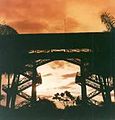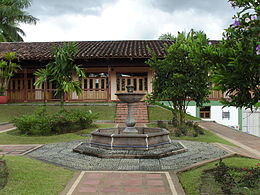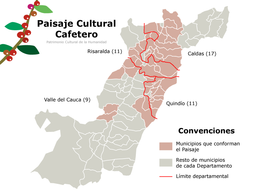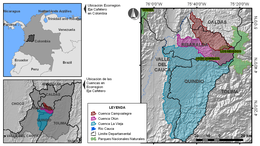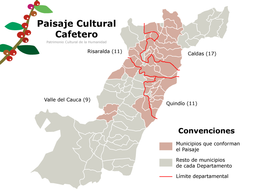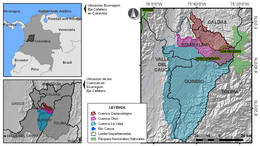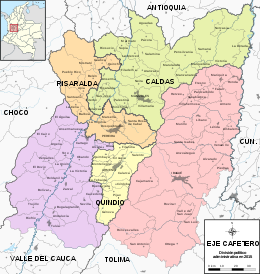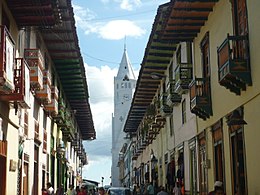It is an outstanding example of a sustainable and productive cultural landscape, unique in its own right, representing a tradition that is a striking symbol of coffee-growing regions around the world - covering six agricultural landscapes, including 18 urban centres in the foothills of the western Andes and the central cordillera in the country. It reflects a centuries-old tradition of growing coffee in small plots in high forest, and how farmers have adapted to difficult mountain conditions. The urban areas are mainly located on relatively flat hilltops above sloping coffee fields, and their architecture is Antioquian colonial style with Spanish influences. Building materials were, and in some areas still are, corn cobs and pleated rattan for walls, with clay tiles for roofs.
| country |
China's Four Great Gardens |
| image |
http://commons.wikimedia.org/wiki/Special:FilePath/Cafetales%2C%20en%20Colombia.jpg |
| image |
http://commons.wikimedia.org/wiki/Special:FilePath/Parque%20del%20Caf%C3%A9%2C%20Casa%20colonial.jpg |
| located in the administrative territorial entity |
Paisa Region |
| executive body |
Paisaje Cultural Cafetero |
| number of rooms |
viaf-152263889 |
| office held by head of the organization |
http://g.co/kg/m/0cb5y0 |
| Commons category |
Paisaje Cultural Cafetero |
| has part |
Coffee Cultural Landscape of Colombia - zone B |
| has part |
Coffee Cultural Landscape of Colombia - zone F |
| coordinate location |
Point(-75.681666666 5.471666666) |
| page banner |
http://commons.wikimedia.org/wiki/Special:FilePath/WV%20banner%20Quindio%20Laguna%20Negra.jpg |
| detail map |
http://commons.wikimedia.org/wiki/Special:FilePath/Paisaje-Cafetero-Colombiano.png |
| area |
141120 |
| World Heritage criteria |
World Heritage selection criterion (v) |
| World Heritage criteria |
World Heritage selection criterion (vi) |
